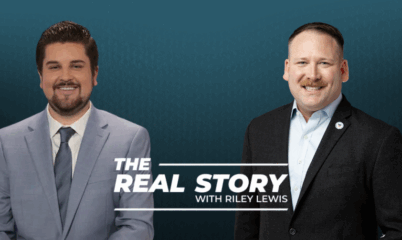
The VA MISSION Act made life better for this North Carolina veteran. But restrictions to access mean not all vets will be so fortunate.
Bob Phipps comes from a military family. His father was a gunner’s mate in the Navy during World War II. His siblings answered the call to serve, too, with his sister choosing the Army and his brother serving as a Navy SEAL in Vietnam.
Bob added a different branch of service to the family legacy, joining the Marine Corps in 1972 and deploying to Vietnam.
“I wish I had stayed in for 20 years,” Bob says of his time as a Marine. In total, Bob spent eight years in the military, stateside and on bases around the world. He was happy to fight for his country and be part of the Phipps family story of military service.
After leaving the military, Bob started using the Department of Veterans Affairs for his health care needs, as millions of veterans do. Though his experiences with the VA have been positive, that may not be the case for other vets. The VA MISSION Act improved Bob’s access to health care, but those provisions from which he benefited are being restricted.
Difficulty many rural veterans face
Over the past 25 years, Bob has used the VA’s health care system for everything from back trouble and surgery to routine physicals and asthma checks. He says his father was a patient at the same VA facility, and he shared his experiences with Bob along the way.
Thankfully, this isn’t going to be a story about failure on the part of the VA. On the contrary, Bob says he never really had a problem. Aside from small mix ups that happen in any health care facility, Bob has a positive outlook on his VA experiences. He even saw the same primary care doctor for more than 20 years at his nearest facility.
However, that nearest VA facility happened to be in Johnson City, Tennessee, nearly 90 miles from Bob’s hometown in North Carolina. Any time Bob needed to see the doctor, whether for routine check-ups or specialized care, he had to drive nearly three hours round trip for the appointment.
This isn’t an isolated incident, especially for rural veterans. Until recently, using VA health care usually meant driving to the nearest VA facility, whether down the street or 100 miles away in another state. Even under the Veterans Choice Program, implemented after the Phoenix wait list scandal, the criteria for accessing community care was ineffective. Vets were still spending hours in the car to and from appointments.
But the VA MISSION Act changed everything.
Under new community care access standards, vets who live more than a 30- to 60-minute drive from a VA facility (depending on the type of care they seek) qualify to see a doctor in their own community. For Bob, the good experiences with the VA got even better when he found out the new standards meant his drive for medical care was cut by more than half.
“The best experience I’ve ever had”
Bob now goes to medical appointments within 30 to 40 minutes of his home. Still not the shortest drive, but a vast improvement from the hour-and-a-half trip he was making each way before the VA MISSION Act.
What’s better, Bob has never been happier with the health care he’s received from community providers. “It was the best experience I’ve ever had,” Bob said of a recent trip to physical therapy. “The doctor did a fantastic job.”
Two years after the signing of the VA MISSION Act, thousands of vets are now able to access care where they live, just like Bob. The new standards mean 38 percent of veterans who use VA care are eligible for community care, up from 8 percent under the Veterans Choice Program.
Bob and other veterans are happy with the care they receive from community providers and the ability to choose where they receive medical care. Recent polling found that nearly 90 percent of veterans favor more choice over whether they use their benefits to see VA or community providers.
But even as the VA MISSION Act has improved Bob’s life and is helping thousands of others get the care they need, that care has been restricted over the last few months.
Protecting community care
Throughout the COVID-19 crisis, the VA has severely limited access to community care, all but shutting down the program. This has left thousands of veterans confused about what their options are. So far, the VA hasn’t given clear guidance or told veterans when their community care will resume.
For Bob, he’s unsure how limitations will affect him. He has a doctor’s appointment scheduled through community care this month, but doesn’t know if he’ll be seen.
Though Bob’s experiences with the VA have been good, that is not the case for many other veterans who’ve waited years for timely, quality care they weren’t getting from the VA. The VA MISSION Act has given thousands of veterans the option to access the care they need in their own communities. That’s why it needs to be protected.
Tell Washington to preserve community care access standards and protect the VA MISSION Act.




